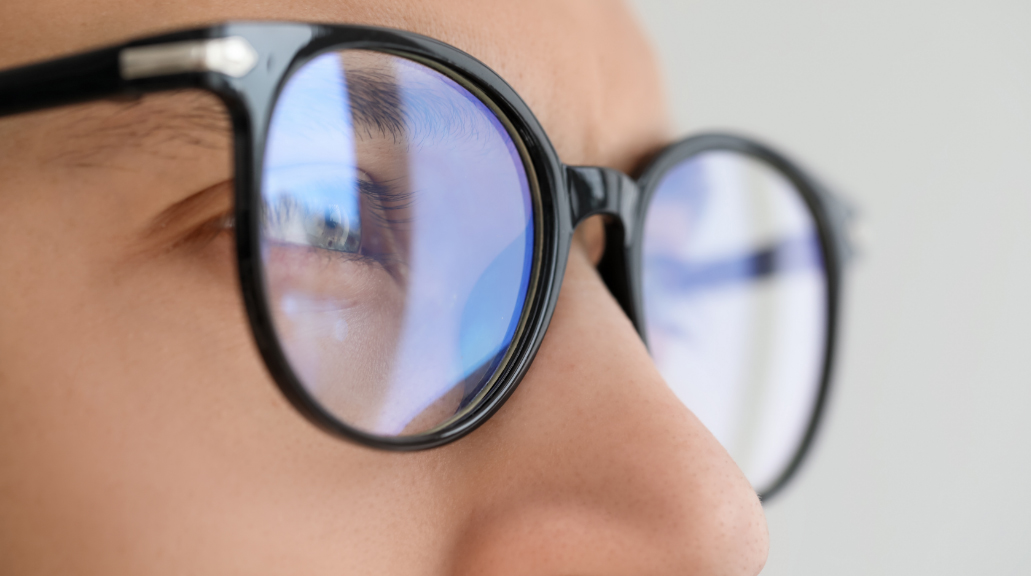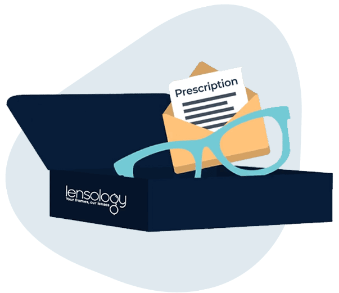
If you’re wondering how to fix a lazy eye, if there are any amblyopia treatments, or what the best glasses for lazy eyes are, you’re in the right place. Our latest addition to our eye health series tells you everything you need to know about amblyopia.
What is Amblyopia?
Amblyopia is an eye condition often found in children. It is usually a result of a change in the nerve pathway between the retina and the brain and causes blurry vision in one eye. Essentially, the weaker (lazy) eye receives fewer signals from the brain, reducing its ability to function correctly and work in sync with the other eye. The other eye becomes stronger, and if the weaker eye is left untreated, improved vision may never fully occur.
Symptoms of Amblyopia
Sometimes, the signs of amblyopia are not obvious and can only be picked up by an eye test, especially if a child struggles to convey their visual problems – this is why it’s so important to have your eyes tested regularly! But the most common symptoms of a lazy eye are:
- One eye wandering inward or outward
- Struggling to focus
- Blurry vision in one eye
- One eye can look different to the other
- Crossed eyes
- Droopy eyelid on one eye
- Eyes are not working in sync
- Poor depth perception
- Head titling
- Eye squinting or closing the weaker eye
Causes of Amblyopia
The causes of amblyopia are often triggered by an abnormal visual experience. For example, a weakness in the eye or light struggling to enter the eye. Amblyopia is more common in children as it develops from a young age, from birth up to 7 years old. It typically only affects one eye, and some of the most common causes of amblyopia include:
Eye muscle imbalance — medically known as strabismus amblyopia—occurs when the muscles that position the eyes are uneven. This is the most common cause of a lazy eye, as the muscles are not working in sync, allowing one eye to turn inward or outward and become ‘lazy’.
Lack of signals from the brain — a lazy eye can develop due to an abnormal visual experience during our early years. This triggers a change in the connection between the brain and the retina — reducing visual signals to the eye and resulting in its weaker performance.
Refractive amblyopia — this is when there is a drastic difference in the sharpness of vision between the eyes. This often results in separate prescriptions for each eye, and is caused by eye conditions such as short-sightedness, long-sightedness or astigmatism.
Deprivation amblyopia — this type of amblyopia usually occurs when there is a problem with light entering the eye, and impacts the ability to see clearly. Cataract is often a cause of this, making deprivation the most severe type of amblyopia if not treated correctly.

How to Treat Amblyopia
Early diagnosis is key. So, if you notice a difference in your child’s eyesight, or if they’re in discomfort or struggling to focus, we recommend seeing an optician straight away. Early diagnosis drives early treatment, which may not cure Amblyopia but can help prevent long-term visual problems as your child grows.
Corrective Lenses
Glasses for lazy eyes will be prescribed if the cause of amblyopia is short-sightedness, long-sightedness, or astigmatism. These lenses help the lazy eye focus and function properly. This also means the child becomes less dependent on the stronger eye.
Contact Lenses
Depending on the type of lenses prescribed for amblyopia, you may notice a difference in the kind of lens. This can sometimes affect the appearance of the eyes, with the lazy eye being amplified to help correct its vision. For children who prefer not to wear glasses, contact lenses can be prescribed by the optician for amblyopia.
Patch Therapy
Children with amblyopia are encouraged to wear an eye patch to cover their stronger eye for a few hours daily. This forces the brain to focus on the weaker eye and use images from the lazy eye to aid and ultimately strengthen their vision.
When Should You Get Help?
Often, with early diagnosis and treatment, a lazy eye can be easily managed to help strengthen the eye and improve vision. Because amblyopia is more frequent in children, it’s important to look for any changes in their vision. If you notice signs such as a dropping eyelid or crossed eyes, speak to your doctor or optician straightaway. If you also spot changes to their behaviour, such as tilting their head more, struggling to read or leaning to one side, these can also be signs of amblyopia and should be referred to an optician.
What Type of Lens Helps with Amblyopia?
The best glasses lens to help with amblyopia depends on the reason for the lazy eye. If you’re child has been prescribed glasses to support amblyopia, it’s most likely that one eye requires a long-sighted or short-sighted lens, or one eye requires short-sighted and the other requires long-sighted. Either way, Lensology can help!
Our lens reglazing service allows us to tailor lenses to your child’s visual needs. We can also apply different coatings to extend the lifespan of the lenses, help protect eyes from UV light, and improve their overall visual experience.
Single-vision Lenses — we can customise our single vision lenses to meet your one or two optical prescription needs.
Polarised Lenses — support their eye health by blocking blinding glare from reflective surface light — ideal if they’re outside, near water or in the car.
Transitions® Lenses — don’t fret about switching from glasses to sunglasses, our Transitions® lenses adapt to the light available to quickly switch from clear to tinted lenses.
Blue Light Lenses — protect little eyes from harmful blue light rays. These lenses are perfect for wearers staring at screens and devices.
ULTIMA Lenses — Our premium lenses have scratch-resistant, anti-smudge, anti-glare, and UV-blocking coatings that help extend the lifespan of their lenses!
Tinted Lenses — whether they’re seeking sunglasses to support a lazy eye on holiday, or want to give their everyday lenses a pop of colour, we have a range of tinted lenses to choose from.
Order your Corrective Lenses from Lensology
At Lensology, we offer a range of lenses for children’s glasses to support their amblyopia. Simply request a reglazing pack and provide us with your child’s latest optical prescription. We’ll create bespoke lenses and fit them directly into their existing frames—quick, easy, and cheaper than buying a new pair of glasses! We can also customise lenses with tints and finishes to suit your kid’s style and hobbies.






